Clematis alpina ‘Pamela Jackman’ is in the Group or Type 1 or C (oops!) A pruning group. (Sometimes, a proofreader would be handy, too.)
Clematis are usually classed as Type A, B or C (aka Group 1, 2 or 3), each with different pruning requirements.
I know what the requirements are. Trouble is, I can never which ones belong to which letters. Then I got smart and started to ignore the letters and instead paid attention to blooming times.
Ideally, the first year after planting, all clematis – regardless of type – should be pruned back hard, around February or March, to a set of fat buds, to develop good bone structure. Ideally, again, you should tie the pruned vines into a fan shape, training the base of the clematis horizontally to encourage an open structure that doesn’t hide the blooms. I have to admit to some a great deal of laziness in the “tying in” department. So, remember, “ideal” is just an ideal.
After that, here’s my trick for remembering when and if to prune clematis (for me, the logic of bloom times trumps the letter system any day).
Ask yourself: when do they flower?
Early spring, which is April/May in our climate
These flower on old wood, which means last year’s growth
Pruning is optional, right after flowering, if they get straggly or overgrow their space. Or leave them alone. The alpina, macropetala and montana clematis fall into this category (Group or Type 1 or A).
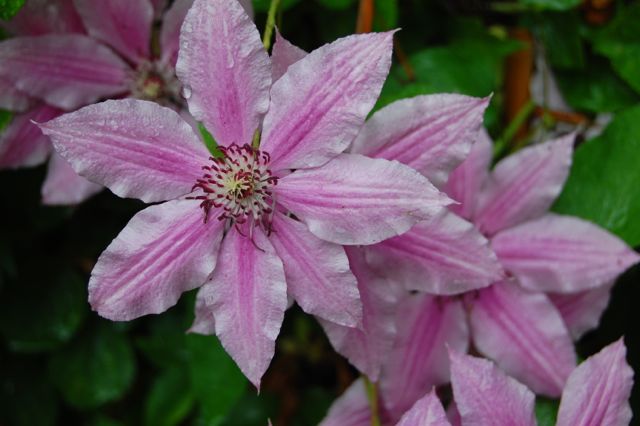 |
| Clematis ‘Nelly Moser’ blooms in May-June, with a smaller flush of flowers (if you’re lucky) in September. It’s in the Group or Type 2 or B pruning group. |
Spring (May-ish) plus a 2nd flush of bloom (August-September-ish)
These flower on old wood AND also on new wood
Prune for shape in the first couple of years, then pruning is optional to cut out weak stems or contain the spread early in the season, or tidy up, just after flowering. Many of the large-flowered varieties (such as ‘Nelly Moser’ and ‘Bee’s Jubilee’) and some of the doubles (such as ‘Duchess of Edinburgh’) can be treated this way (Group/Type 2 or B – sometimes called Group B1. Is it any wonder we get confused?).
 |
| Clematis ‘The President’ |
Early summer, starting June-ish, and (if you’re lucky) continues to bloom for months
These also flower on old wood AND new wood
Rather than having a gap between blooming periods, these go on and on, given enough fertility and moisture. This group (also Group/Type 2 or B, but sometimes classified as Group B2) includes ‘The President’, ‘Henryi’ and newer doubles such as ‘Josephine.’ Again, you would prune as for Group B1, above: an optional light pruning in February/March to shape or cut out weak stems, with a tidying, if necessary, after flowering.
 |
| Clematis tangutica is a lovely, yellow late-flowering clematis in the Group/Type 3 or C pruning group |
Late summer to fall, which means July onward
They flower on new wood only, meaning on this year’s new growth
Prune back hard to a couple of sets of fat buds a few feet from the ground in Feb/March to keep the blooms closer to eye level, otherwise they can escape from view. Viticella and tangutica clematis as well as the herbaceous or non-twining clematis can be classed this way (Group/Type 3 or C).
 |
| My dainty thug, Clematis fargesoides ‘Summer Snow’, which is in pruning Group/Type 3 or C. Sometimes, I give this vigorous climber a major haircut. Sometimes, I just let it run wild. |
And then there are the super-vigorous growers…
I have a Clematis fargesoides ‘Summer Snow’ (although I think it goes by another name now) that is a big thug, and could be cut back hard (that is, to the base) every year, if I wanted to.
This video how-to by Marjorie Harris has her treating the massive bloomer C. ‘Betty Corning’ in the same way. Harris is refreshingly no-nonsense about her clematis pruning. And, really, you should be, too.
For further reading, I love this list of reliable Clematis for Beginners [PDF] from the International Clematis Society.

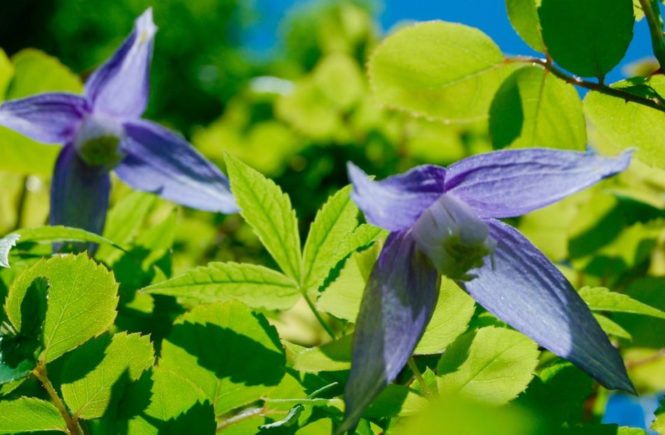
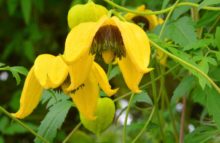
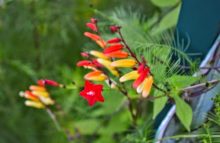
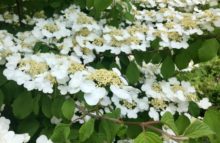
5 comments
So enjoyed your clematis blog.Very interesting thankyou.
I have many in my garden and want to get an alpine clematis for my raised alpine bed.
the trick is remembering just what kind of clematis you have – although the bloom time is the key. I guess. Can you tell I don't have any clematis?
Great advice!
Fellow clematis growers help! I moved to East York (Toronto) 3 years ago and live on a lovely ravine-lot with a large garden. Trouble is, something is eating my clematis. All types, all sizes,full sun, part sun, part shade–no matter. Whatever it is prefers the youngest growth and of course, the buds. I have tried anti-earwig methods as advocated by Bill's Garden Centre: they seem to find them even tastier.
Any suggestions welcome.
Something is eating my new president clematis? Seems to like the flowers the most. Any ideas anyone?